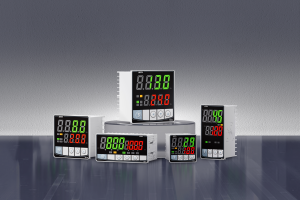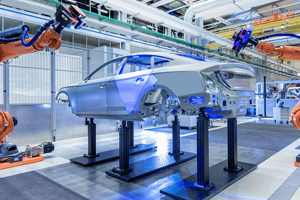Understanding PID Controllers: Components, Functionality, and Applications
Learn what a PID controller is, how it works, and its components. Discover the benefits, challenges, and applications of PID controllers in various industries. Understand their importance in maintaining precise control.
1. Introduction to PID Controllers
PID controllers (Proportional-Integral-Derivative controllers) are essential elements in industrial automation and process control systems, used to maintain desired output by adjusting control inputs based on differences between setpoint and measured process variables. PID controllers have earned wide praise as reliable controllers suited for everything from manufacturing to robotics applications.
2. Components of a PID Controller for Precise Ignition Delivery, (PID).
Proportional Component (P) The proportional component generates an output that directly corresponds with any current error value; that is, any difference between desired setpoint and actual process variable values. Its proportional gain determines responsiveness: higher proportional gains result in more aggressive responses against errors while too large of gains could cause system instability.
Integral Component (I)
* The integral component is designed to address past errors by integrating their accumulation over time and correcting steady-state errors that cannot be rectified solely with proportional control alone. In temperature regulation systems such as thermostat control systems, an integral term ensures the system reaches and keeps within setpoint by compensating for persistent discrepancies.
* Derivative Component (D)
This term predicts future errors based on their rate of change, providing a damping effect and decreasing overshoot while improving system stability. In temperature control applications, its derivative gain determines sensitivity to rate-of-change errors while helping smooth response times to avoid sudden fluctuations and ensure a more constant temperature setting.
3. Working Principle of PID Controllers
PID controllers utilize a feedback loop mechanism, continuously calculating error values and applying corrections based on proportional, integral, and derivative terms. Here'operation in practice:
* Feedback Loop Mechanism: A controller receives input from sensors measuring current process variables to compare with its desired setpoint and calculate any discrepancies or deviations that arise in between. It then calculates any errors found.
*Continuous Error Calculation and Correction:The PID controller adjusts control output continuously in order to minimize error, by means of proportional term addressing current error, integral term correcting past errors accumulated over time, and derivative term anticipating potential future ones.
*Practical Example of PID Controller in Heating Application: In a heating system, when temperature dips below its setpoint, the PID controller increases heating output while when temperatures increase beyond this point it decreases it; integral term ensures temperature reaches setpoint while derivative term prevents overshoot or oscillations from taking place.
4. Benefits of PID Controllers
PID controllers offer numerous advantages when used for various applications:
* Improved Accuracy and Stability: PID controllers offer precise control by integrating proportional, integral, and derivative terms - helping minimize deviation from setpoint.
* Reduce Overshoot and Oscillations: The derivative term helps dampen system response, decreasing overshoot and oscillations common to simpler control methods.
PID controllers offer versatility across a range of applications and systems, making them highly adaptable. Their tuning options enable them to adapt seamlessly with various systems and operating conditions for increased adaptability and widespread applicability.
5. Challenges and Limitations
While PID controllers possess numerous benefits, they also present certain obstacles and constraints:
*Sensitivity to Noise: Since derivative calculations measure error rate changes, any noise present can quickly cause fluctuations in output to lead to unpredicted fluctuations and cause instability of output derivative.
Tuning Requires Experience and Knowledge of System Dynamics: Proper tuning of a PID controller takes experience and an in-depth knowledge of system dynamics; incorrect tuning could result in either poor performance or instability of the system.
* Potential of Derivative Kick: Any sudden change to a setpoint may trigger a large rise in derivative terms known as derivative kick, leading to undesirable behavior within your system if its setpoint changes frequently.
PID controllers have many uses due to their precision and dependability: for instance in agriculture and transportation.
* Industrial Processes: PID controllers play an indispensable role in chemical reactors, furnaces and other industrial processes by precisely managing variables like temperature, pressure and flow rate for product quality and safety purposes.
* Consumer Appliances: PID controllers can enhance comfort and energy efficiency in household appliances like ovens and HVAC systems by maintaining an ideal temperature, thus improving comfort levels while saving on energy usage.
*Robotics and Automation: PID controllers are commonly employed in robotics to precisely and smoothly move robotic arms; in automation systems they regulate various parameters to achieve peak performance.
- Understanding PID Temperature Controllers: Components, Benefits, and Applications
- What Are PID Controllers Used For?























